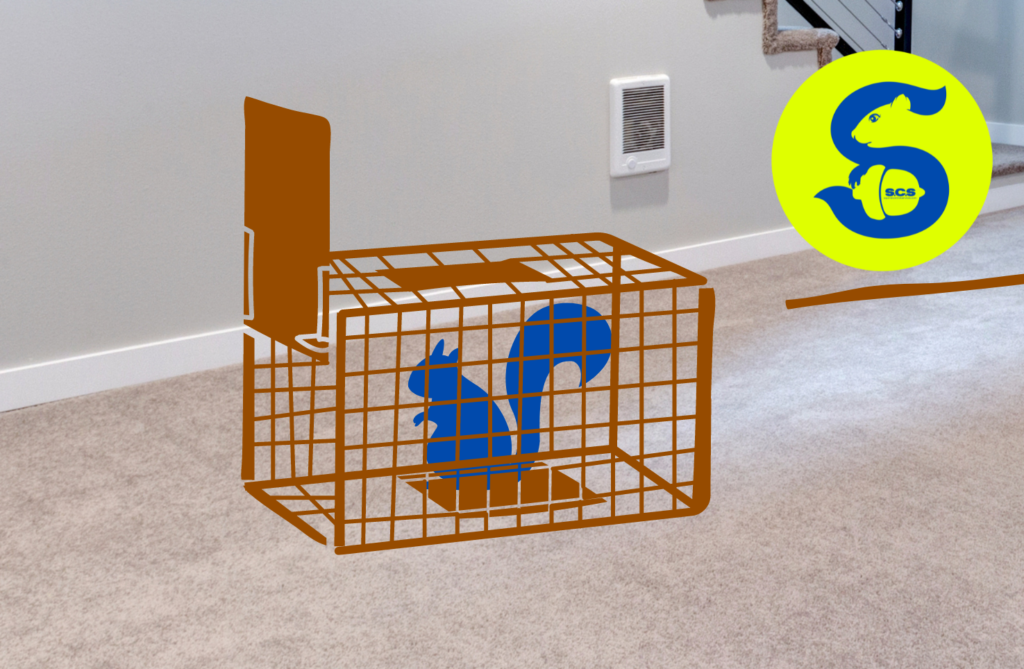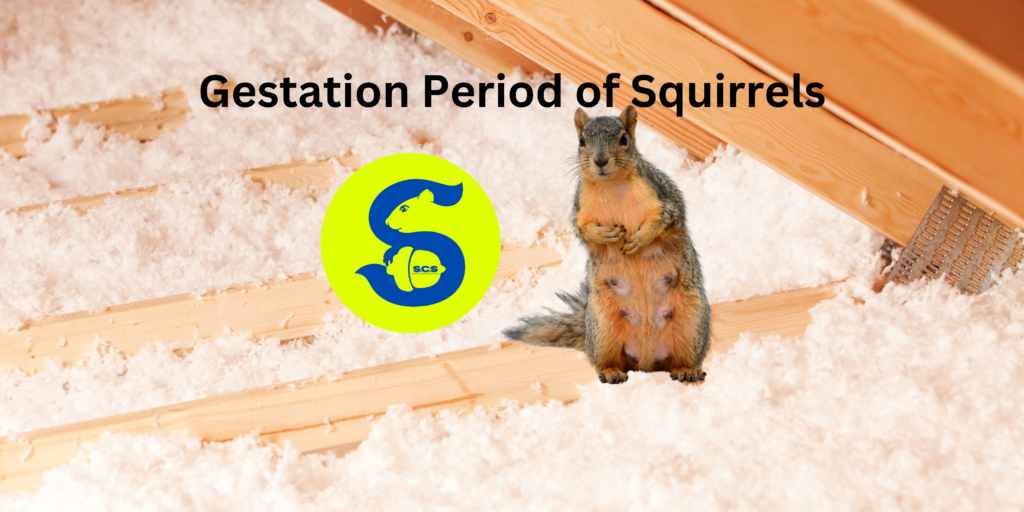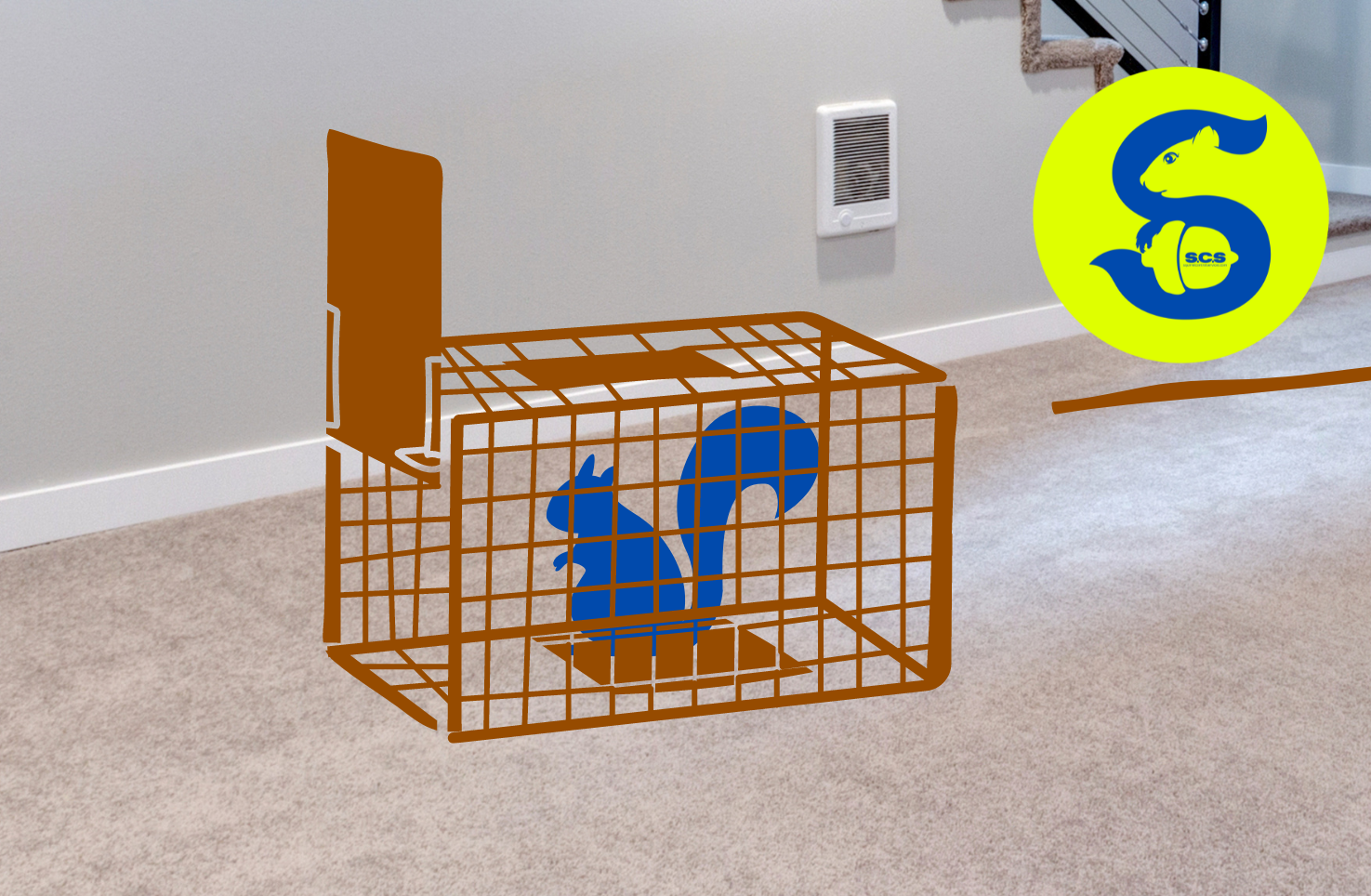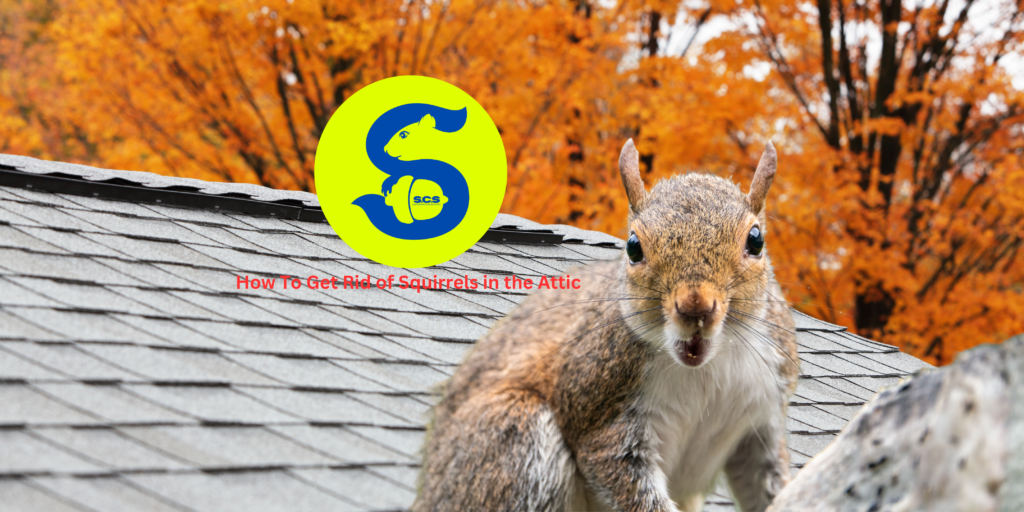The Best Squirrel Trap: Trapping Tips and Techniques for Effective Results
Do you need to catch a squirrel? Choose the right squirrel trap and set it up effectively for the best results.
Squirrel Trap
- Selecting the appropriate trap to catch squirrels, whether lethal or humane, is essential for their successful removal. Options like tube traps, box traps, and Havahart live traps are available based on preferences and requirements.
- Strategic trap placement significantly influences trapping success; placing traps along known squirrel paths near food sources and natural habitats increases the chances of catching squirrels efficiently.
- Effective baiting and trap setup, along with regular monitoring, are crucial for trapping success and ensuring the humane treatment of squirrels. Bait options include peanut butter, nuts, grains, and fruits, which are particularly attractive to squirrels.
Choosing the Right Squirrel Trap
Selecting the right trap for squirrel removal is crucial to ensure effectiveness. Although we do not condone using a lethal trap, your decision may hinge on whether you prioritize a humane approach or require immediate elimination.
For those who need instant results, lethal traps come in various forms.
- Tube traps consist of metal cylinders with hooks that hold bait and trigger spring-loaded bars to instantly dispatch squirrels.
- Body grip traps have twin spring-loaded devices, which fur trappers originally employed due to their efficiency in killing.
- Cage traps (keyword usage retained without any additional input)
Conversely, several live trap options exist if you aim to capture squirrels unharmed.
- Box-type designs feature small cages wherein doors quickly shut once a squirrel activates a mechanism by taking the bait.
The Havahart Easy Set variety incorporates galvanized steel, sensitive triggers, and sturdy locks intended for safe squirrel containment.
Two-door models from Havahart also incorporate fine mesh to prevent escape and theft of bait while facilitating rapid but harmless capture, which is especially useful for larger varieties of squirrels.
In picking out an appropriate trap, evaluate factors like dimensions, construction materials, and functional design. For instance, the compact Havahart X-Small 1-Door Trap has been crafted specifically for effective yet gentle trapping. It’s built from wire mesh treated against rust, coupled with steel reinforcements guaranteeing longevity. Whether choosing between life-preserving techniques or termination methods, the suitable choice of trap proves vital within your strategy toward managing squirrel intrusions efficiently.

Ideal Placement for Your Trap
Successfully capturing squirrels is highly dependent on the proper placement of your trap. These creatures are habitual, traversing identical routes when seeking sustenance and refuge. To efficiently ensnare squirrels, one should observe indications of squirrel activity such as tracks, nibbled vegetation, and feces to pinpoint their frequented paths.
Place the trap on a stable surface along these identified travel corridors — ideally close to protection, like a tree’s base or adjacent to a wall near the impacted zone. Position traps near lush plant life or gardens where squirrels commonly search for food. Positioning them near bird feeders or nesting areas can also be particularly fruitful since these locations attract high levels of squirrel traffic. Setting up traps around trees nearby will take advantage of their natural inclination towards such habitats.
Adhering to additional measures could enhance your ability to effectively ensnare squirrels.
- Install traps around your property’s borders, as they provide potential catch sites, largely because open spaces tend not to appeal as much.
- Ground-based traps must remain safe from interference by animals other than targeted species, including household pets.
- Tactical deployment increases prospects for promptly trapping an increased number of squirrels.
Effective Baiting Strategies
The choice of bait is critical to the success rate in trapping. To lure squirrels effectively, consider using:
- grains
- seeds
- nuts
- peanut butter
- herbs
- soft fruits and vegetables
By selecting suitable bait, you can make your live trap more appealing even when placed close to a bird feeder, boosting the likelihood of capturing an animal.
Place the bait behind the trap trigger mechanism at the far end with only one door so a squirrel can step on it. With two-door traps, position your bait in between them — either directly on top of the plate or buried below it in ground level. Alternatively, suspend it from above. Coating peanut butter or molasses onto these surfaces and attaching solid bait increases the chances that squirrels apply enough pressure on triggers to be caught reliably during trapping operations. These methods are proven to elevate your effectiveness at securing such animals within traps.
Squirrel Removal Cost
- Removal: One-Way Door, Trapping
- Repair: Shingles, Vents, Soffit
- Prevention: Reinforce Vulnerable Areas
Setting Up Your Squirrel Trap
To maximize the effectiveness of your squirrel trapping efforts, it is crucial to set up the trap correctly. It is imperative to wear thick gloves while placing bait in the trap. This prevents squirrels from being put off by human odours and increases the likelihood that a squirrel will enter the trap.
Each model of trap comes with its own set of instructions that should be followed meticulously. For example, setting up a Havahart X-Small 1-Door Trap involves precise manipulation to ensure that the trap door functions properly. Squirrel traps used by professional animal control personnel often consist of galvanized wire mesh with smooth edges for safety purposes and typically feature a single spring-loaded door mechanism. Properly securing this trap door and strategically positioning bait inside are essential steps toward effectively trapping squirrels.
Monitoring and Checking Traps
It’s essential to regularly check your traps during squirrel removal using a humane trap. Regular monitoring minimizes the distress and injury risks to a squirrel associated with extended confinement by ensuring that trapped animals are not left inside for too long, preventing excessive hunger, thirst, or anxiety before release.
By closely examining the traps you’ve set out, you can swiftly free any inadvertently trapped non-target species. Employing this considerate method guarantees the welfare of all captured animals—ensuring that incidental captures aren’t subjected to harm and allowing for the quick and secure release of squirrels.
Humane Release Techniques
Capturing squirrels must be accompanied by a humane release process. It’s critical to familiarize yourself with the legal requirements for trapping and releasing squirrels in your area since there can be substantial differences between states. Seeking guidance from a wildlife rehabilitator could provide the kindest approach when relocating a trapped squirrel.
To effectively relocate a captured squirrel, it is advisable to transport it at least three miles away from your residence. This reduces the chances of the animal making its way back and creating additional problems. Ensuring you’ve placed enough distance between your home and where you free the trapped animal will help offer a more lasting resolution to any issues caused by these animals.
Preventing Future Infestations
Employing strategies like sealing off access points and cutting down on food availability, such as what occurs when individuals feed squirrels, plays a crucial role in averting the recurrence of squirrel invasions. It is important to carry out a comprehensive inspection to locate all possible entry points and nesting spots utilized by the squirrels while ensuring no remaining squirrels are indoors. Typical areas where these creatures might enter include vents lacking screens and trim boards with decay.
By covering these potential ingress sites with meshwork and bolstering weak spots by employing sturdy materials such as steel wire or metal flashings, you can secure your home against future incursions. Storing trash in containers with snug lids and refraining from leaving pet foods or seeds for birds outdoors helps remove animal attractants. Implementing these measures effectively thwarts subsequent squirrel problems, keeping homes free from their presence.
Steps to keep your dwelling safe from unwanted four-legged guests include:
- Cutting back branches of trees if they reach too close (within six to eight feet) of your roofline could serve as leaping points for agile squirrels.
- Fitting robust caps over chimneys and covers over vents preventatively stops wildlife entries through such avenues.
- Periodic reassessments ensure ongoing protection against any new attempted infiltrations by vigilant rodents seeking shelter within property confines.
Dealing with Squirrels in Different Areas of the Home
Squirrel infestations can plague numerous areas within your home, including the attic, walls, and chimneys. Employing appropriate methods is crucial for successfully eradicating these pests from these locations.
Implementing specialized approaches, such as illuminating attics with bright lights or creating exit opportunities in chimneys, is key to controlling squirrel activity throughout various sections of a residence.

Removing Squirrels from the Attic
Ejecting squirrels from an attic may require some effort, but it’s doable with appropriate tactics. Maintaining a continuous bright light in the space can dissuade squirrels from staying, as they are inclined towards dimly lit areas. Using loud sounds to scare the squirrels away can be another effective strategy to compel them to abandon the attic.
Employing cider vinegar is also advantageous. By saturating cloths with this potent-smelling liquid and distributing them throughout the attic, you create an unwelcoming environment for the squirrels. A combination of these methods will effectively nudge squirrels out of your home’s upper recesses while helping ensure that your residence remains free of these agile rodents.
Handling Squirrels in the Chimney
Dealing with squirrels trapped in a chimney demands a unique strategy. Producing loud sounds near the fireplace could frighten the squirrel, prompting it to climb up and out of the chimney for escape. Providing an exit pathway by dropping a heavy rope down the chimney can enable these squirrels to ascend and depart.
If you offer an escape avenue by inserting a hefty rope into your chimney, it allows any trapped squirrel to find its way out securely, thereby preventing additional complications from arising.

Addressing Baby Squirrels
Handling baby squirrels should be approached with care and patience. If they are living inside your home, it’s usually advisable to allow the babies sufficient time to mature and depart naturally. The desperate efforts of a mother squirrel trying to get back in may signal that her young ones are still trapped within.
If you believe that baby squirrels are confined in your dwelling, it is recommended that you seek help from an expert. Professionals can facilitate the secure and compassionate extraction of these juvenile critters, ensuring their safety.
Cleaning Up After the Squirrel has been Removed
After squirrels are removed, it’s imperative to thoroughly sanitize your residence and take measures to avert subsequent problems. To sustain a hygienic and secure living space, it’s essential to eliminate all remnants of the squirrels’ habitation, including their nests, excrement, and any other pollutants they’ve left behind.
Swiftly rectifying any destruction wrought by the squirrels is also crucial—whether it involves gnawed cables, compromised insulation, or damaged structural elements. Timely repairs will not only keep your home safe but will also act as deterrents against future squirrel infestations.
Benefits of Using Squirrel Traps
Utilizing traps for squirrels offers several advantages, among which are:
- Preventing damage: Traps designed for squirrels assist in avoiding substantial harm to parts of your home, such as the attic insulation and electrical systems.
- Minimizing health risks: Employing squirrel traps also lessens potential health hazards by curtailing the spread of diseases that these animals may transmit, like those associated with fleas and parasites.
- Ensuring tranquillity: Adopting trapping allows homeowners to rest easy knowing they’re proactively combating squirrel invasions.
Capturing squirrels significantly contributes to eliminating disturbances they create—like sounds from their nesting habits that often occur early in the morning. Take, for example, the Havahart X-Small 1 Door Trap. It’s constructed robustly while prioritizing safety, thereby reducing chances of injury to humans and wildlife. Its design supports efficient captures that are safe and quick, making this trap a reliable tool for managing unwanted animal guests.
Summary
In summary, effectively managing squirrel infestations involves selecting the right trap, strategic placement, proper baiting, and humane release techniques. By sealing entry points and removing food sources, you can prevent future infestations and maintain a squirrel-free home.
Remember, addressing a squirrel problem promptly and humanely protects your home and ensures these critters’ well-being. Stay vigilant and proactive to enjoy a peaceful, squirrel-free environment.
Frequently Asked Questions
What type of bait is most effective for catching squirrels?
Use grains, seeds, herbs, peanut butter, soft fruits, vegetables, and nuts as effective bait to lure squirrels. These elements are highly successful in attracting these animals.
How often should I check my squirrel traps?
It is essential to frequently inspect your squirrel traps to treat captured squirrels humanely and swiftly liberate any animals caught by mistake.
Doing so safeguards the welfare and safety of these creatures.
What should I do if I find baby squirrels in my home?
Ensure that the baby squirrels have matured sufficiently to depart independently or seek aid from a professional.
How can I prevent squirrels from entering my home?
To prevent squirrels from entering your residence, seal off all possible entryways, eliminate sources of food, trim tree branches back, and install chimney caps and vent covers.
Are there specific regulations for trapping and releasing squirrels?
It’s essential to verify your state’s legal regulations concerning the trapping and relocation of squirrels since these laws vary from state to state.







